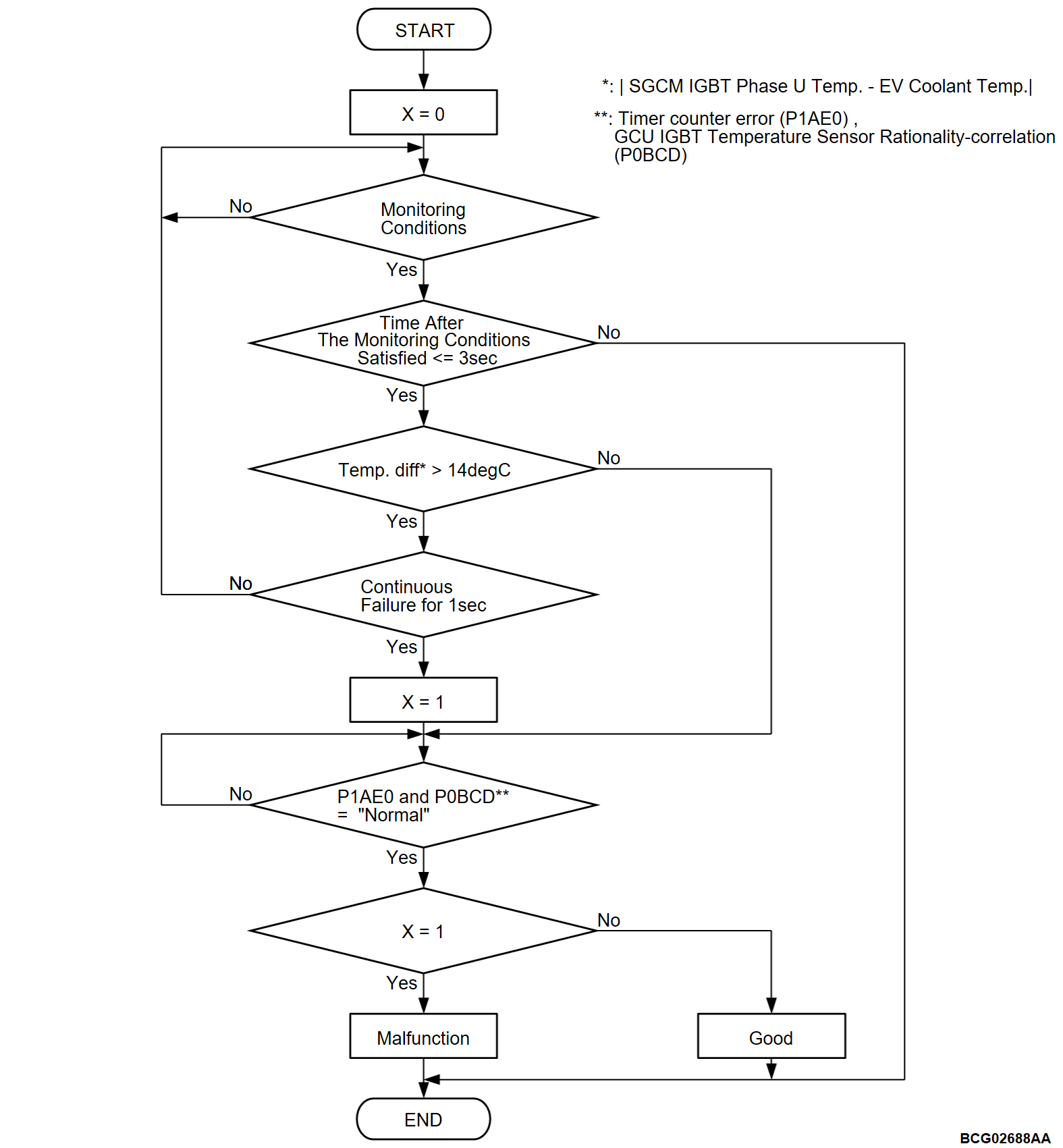DTC P0A01: Coolant TEMP. SNS. circuit range
| caution | Before replacing the ECU, ensure that the communication circuit is normal. |
DESCRIPTIONS OF MONITOR METHODS
- The EV coolant temperature sensor is compared to GCU IGBT phase U temperature sensor.
- The GCU IGBT phase U temperature sensor is selected for comparison because it is the closest downstream temperature sensor.
MONITOR EXECUTION
- Once per driving cycle
MONITOR EXECUTION CONDITIONS (Other monitor and Sensor)
Other Monitor (There is no temporary DTC stored in memory for the item monitored below)
- Sub-battery management unit [BMU (SUB)] monitor
Sensor (The sensor below is determined to be normal)
- Generator control unit (GCU) IGBT Temperature Sensor
DTC SET CONDITIONS
Check Conditions
- The PHEV-ECU power supply voltage is more than 9.0 volts.
- The IGBT status of GCU is off (shutdown).
- Time after above conditions satisfy is less than 3 seconds.
- The soaking time is more than 1,800 seconds.
Judgment Criterion
- The absolute value of the difference between the value of EV coolant temperature and the value of GCU IGBT phase U temperature remains 57°F (14°C) or more in 1 second.
PROBABLE CAUSES
- Malfunction of the EV coolant temperature sensor.
- Malfunction of the EV coolant temperature sensor circuit.
- Malfunction of the PHEV-ECU.
DIAGNOSIS
Required Special Tools
- MB991223: Wiring harness set
- MB992006: Extra fine probe
STEP 1. Using scan tool (M.U.T.-IIISE), check whether the other DTC is set.
STEP 2. Using scan tool (M.U.T.-IIISE), check the data list.
Check that the following data list display contents are normal (Refer to  ).
).
 ).
).- Item No.82: Water temperature sensor voltage
OK:
- Approximately 3.5 volts [at 0°C (32°F)]
- Approximately 2.6 volts [at 20°C (68°F)]
- Approximately 1.7 volts [at 40°C (104°F)]
- Approximately 1.0 volts [at 60°C (140°F)]
Is the check result normal?
STEP 3. Check the signal line for damage, open, short to ground and short to power supply circuit (EV coolant temperature sensor connector and the PHEV-ECU connector).
Check the wiring harness between EV coolant temperature sensor connector and the PHEV-ECU connector (WTS terminal).
Is the check result normal?
STEP 4. Check the ground line for damage, open, short to ground and short to power supply circuit (EV coolant temperature sensor connector and the PHEV-ECU connector).
Check the wiring harness between EV coolant temperature sensor connector and the PHEV-ECU connector (GWTS terminal).
Is the check result normal?
STEP 5. EV coolant temperature sensor check
![[Previous]](../../../buttons/fprev.png)
![[Next]](../../../buttons/fnext.png)


